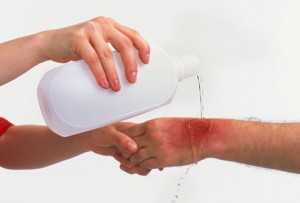Burns are widespread. Some are less serious, some are very severe but regardless of the type, you should know how to deal with it. While waiting for help, it is a must that you “self medicate”; this could be the difference of scarring or not scarring. If you are medically trained, it is better but if you are not, it would be beneficial if you consider the following things:

Identify the degree
Be reminded that there are different types of burns. You should learn how to identify each type or degree of burn. The first degree of burn is less serious and it does not necessarily need medical attention. It is generally characterized by light scalding, reddish and somewhat swollen. The second degree burn is often misinterpreted as a first degree so you should be cautious about it. When you see redness, swelling and you feel pain plus the skin looks blotchy, you have a second degree burn. The third degree burn is more serious and painful. If you were exposed to a hot object for a very long time, most likely you have third degree burns; this burn will cause bone, muscle and fat damage.
Treatments
If you have a minor burn, the first thing that you should do is put the affected area under running water for about 15 to 20 minutes. If you feel any burning sensation, you should continue the process. If running water is not available, you have to apply a cold compress. If there are no cold compress, you can use an ice pack. Remember not to apply the ice directly unto the burns because it can damage the skin. If the pain is still there, you should look for pain reliever. Ibuprofen or Naproxen will do. Treat the burn every hour by rinsing it with saline solution. However if it is serious, you should go to the emergency room right away.